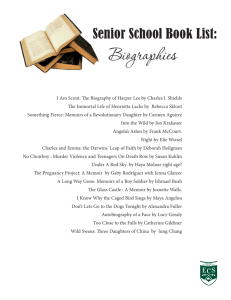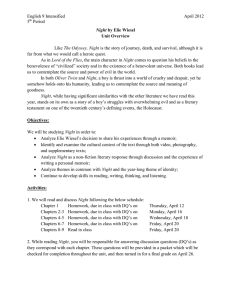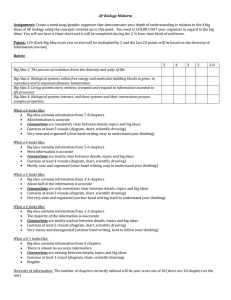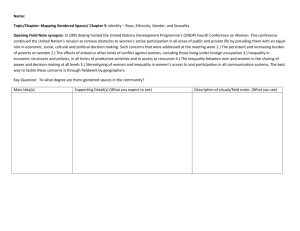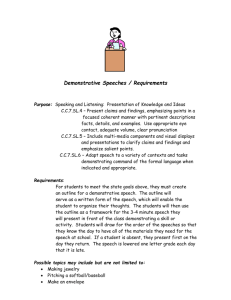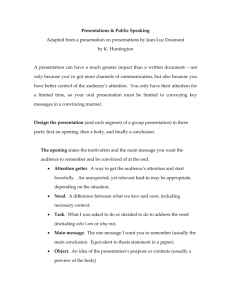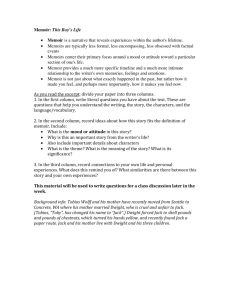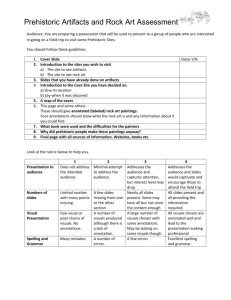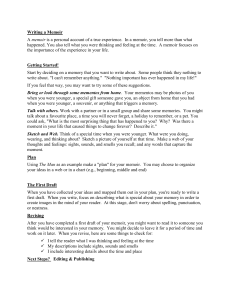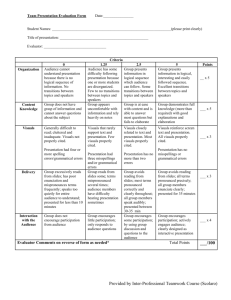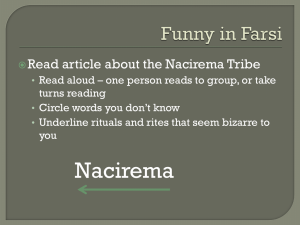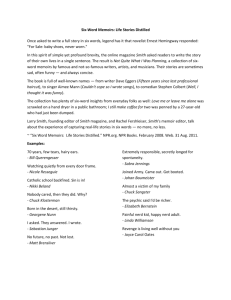Assignment #2
advertisement
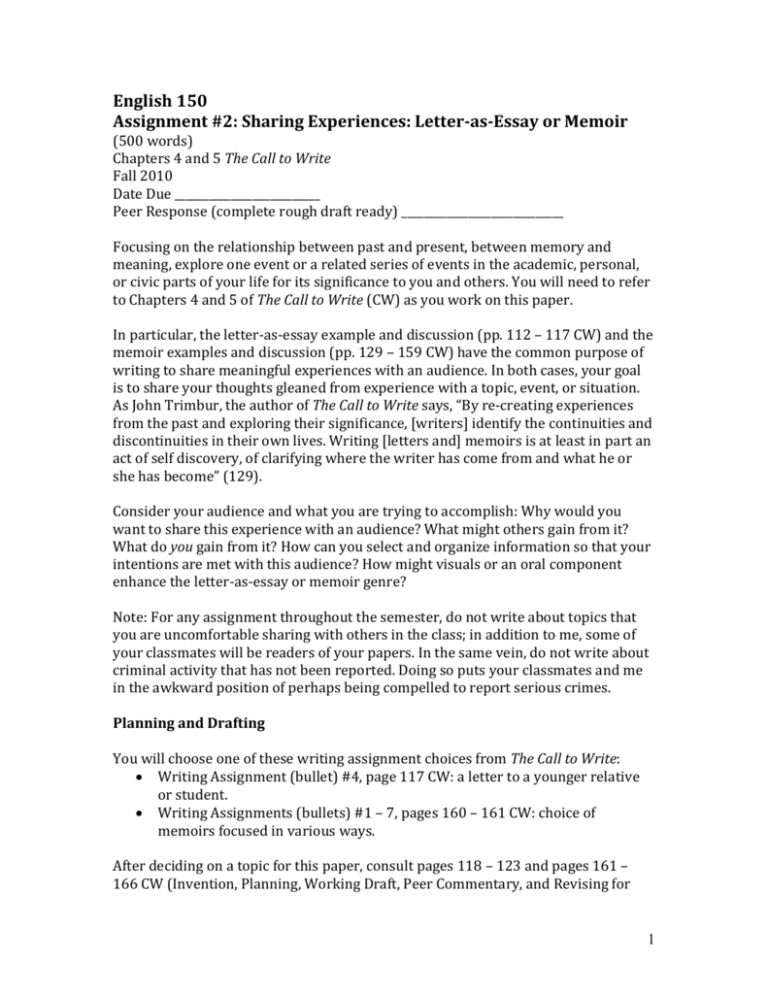
English 150 Assignment #2: Sharing Experiences: Letter-as-Essay or Memoir (500 words) Chapters 4 and 5 The Call to Write Fall 2010 Date Due __________________________ Peer Response (complete rough draft ready) _____________________________ Focusing on the relationship between past and present, between memory and meaning, explore one event or a related series of events in the academic, personal, or civic parts of your life for its significance to you and others. You will need to refer to Chapters 4 and 5 of The Call to Write (CW) as you work on this paper. In particular, the letter-as-essay example and discussion (pp. 112 – 117 CW) and the memoir examples and discussion (pp. 129 – 159 CW) have the common purpose of writing to share meaningful experiences with an audience. In both cases, your goal is to share your thoughts gleaned from experience with a topic, event, or situation. As John Trimbur, the author of The Call to Write says, “By re-creating experiences from the past and exploring their significance, [writers] identify the continuities and discontinuities in their own lives. Writing [letters and] memoirs is at least in part an act of self discovery, of clarifying where the writer has come from and what he or she has become” (129). Consider your audience and what you are trying to accomplish: Why would you want to share this experience with an audience? What might others gain from it? What do you gain from it? How can you select and organize information so that your intentions are met with this audience? How might visuals or an oral component enhance the letter-as-essay or memoir genre? Note: For any assignment throughout the semester, do not write about topics that you are uncomfortable sharing with others in the class; in addition to me, some of your classmates will be readers of your papers. In the same vein, do not write about criminal activity that has not been reported. Doing so puts your classmates and me in the awkward position of perhaps being compelled to report serious crimes. Planning and Drafting You will choose one of these writing assignment choices from The Call to Write: Writing Assignment (bullet) #4, page 117 CW: a letter to a younger relative or student. Writing Assignments (bullets) #1 – 7, pages 160 – 161 CW: choice of memoirs focused in various ways. After deciding on a topic for this paper, consult pages 118 – 123 and pages 161 – 166 CW (Invention, Planning, Working Draft, Peer Commentary, and Revising for 1 both Chapters 4 and 5). Your text identifies several qualities of effective writing about experiences, from thinking about purpose, to selecting detail and thinking about arrangement of that material, to writing beginnings and endings of this paper. It is especially important to be clear about your purpose (why you have chosen this experience to share). Make a significant point about your experience (how you were affected, what you learned, why this is important to you and others now— answering the “So what?” question, in other words). Consider using visuals and research to support your purpose. Refer to Chapter 4 in Andrea Lunsford’s The Everyday Writer (EW) to get ideas about this. Evaluation Criteria At a minimum, your paper needs to satisfy these criteria. However, the grade is based not just on whether a feature is present or not, but on how well it has been integrated into your paper. Also see your ISUComm Foundation Courses Student Guide, 2010 – 2011 about evaluation of individual projects. Context Thoughtful and perceptive treatment of topic; original approach; scope sufficiently narrow. Purpose for writing is clear (educate, entertain, persuade) and consistent throughout the paper. The “So what?” question is answered. Clear sense of audience and consistent attention to audience’s needs. Introduction engages audience’s interest. Substance Content is fully developed, relevant, and substantial; detail carefully chosen and specific. Organization Focuses on a precise, interesting and insightful point or thesis that guides development and organization. Introduction provides overview of organization. Conclusion sums up key points. Sequence follows a logical arrangement for this material appropriately organized into paragraphs. Relationship among ideas is clear; coherent; transitional devices used to guide reader. Style Expression is clear and concise. Good choices in use of dialogue, details, visuals. Vocabulary is precise, vivid and appropriate word choice Conventions/Correctness: Writing is free from sentence-level errors and word choice errors. Delivery Consistency in typography, headings. Visuals appropriately integrated into text. 2
